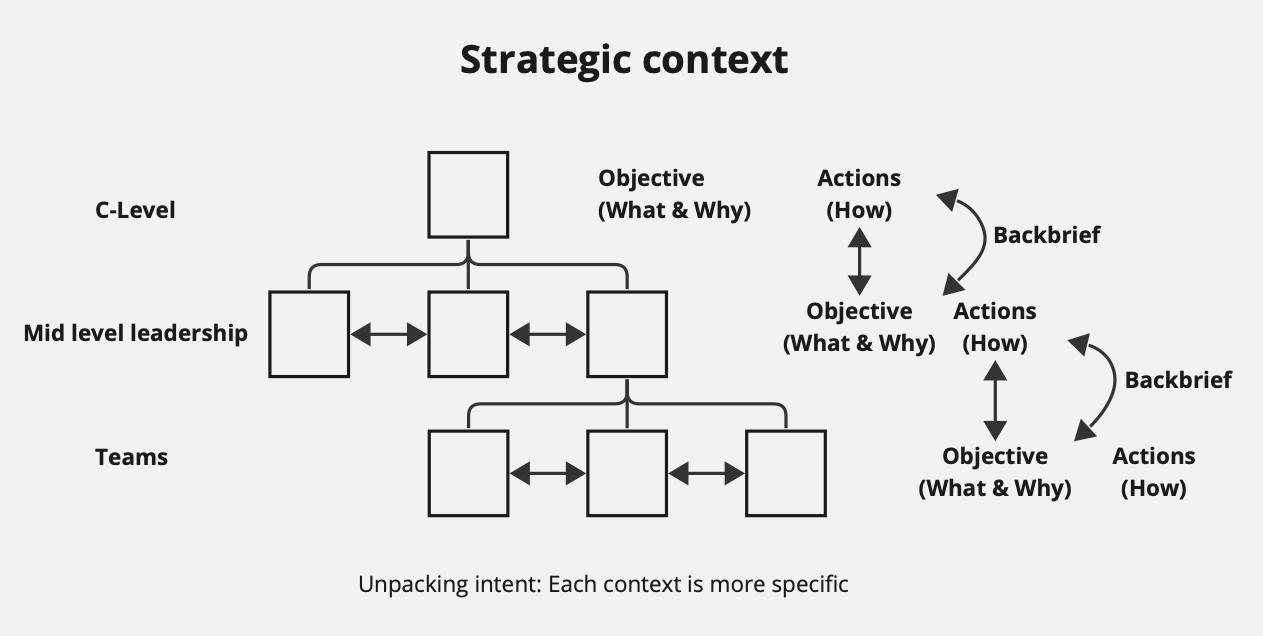





The pressure of navigating the complicated world of software development is certainly something you have experienced before. Building roadmaps, requirements, or user stories often don’t give the business expected outcomes. Misalignment on what the business requires and what the team delivers drives team members nuts. That kills the team's motivation. What if I told you that the military mission command conduct could be the key to inspiring your software teams to reach new heights of efficiency, creativity, and commitment? The key to getting the results that you count from your team?
Mission command centers on a fundamental belief: When armed with a clear mission, your team can decide to move your business forward. Both empowerment and trust are important. When your team members feel that their input is valued and their decisions have an impact, it leads to a surge in motivation. That's the magic of mission command. It is a tool to cultivate team trust and accountability.
Mission command mirrors the principles of agility that so many software teams value: self-organization, quick adaptation, and iterative progress. Of course, mission command doesn't imply a lack of oversight. It's about laying out your mission with crystal clear clarity, supporting your team with the necessary resources, and setting up checkpoints to track progress and offer feedback. It’s about creating space to evaluate team progress and support them when needed.
Let’s see how it works in practice. Considering your own tasks and responsibilities, you should reflect on what is important to you. Based on that, you define your mission by briefly describing the task and purpose. Define how you will measure the success of a mission. Describe additional constraints and unknowns you know when defining the mission. That’s your “What” you need to get done.

Having that mission defined, you go to your team and brief them. The important step to get the alignment is asking ‘How’ they will implement it. It doesn’t have to be in big details. It’s a great moment to identify if the team considered everything in their implementation, their approach and if they are skilled enough to work on your mission. It gives you feedback on how engaged you will be to coach your team once they execute this idea. Sharing an implementation plan is called a back brief. It’s a double check for alignment and mechanism to build trust.
What is the structure of a Mission?
Mission — your ‘What’
The end result? A culture where every team member feels involved, valued, and heard. An understanding between both sides, a clear communication channel. A setup where obstacles are tackled promptly and efficiently.
The beauty of mission command lies in its universality. This method can help you realize the full potential of your software teams, whether you're in charge of a Silicon Valley start-up or a Japanese IT behemoth.
That’s also a great tool for cooperating with external parties. They usually have bigger autonomy in work, so you can leverage from defining clearly what is expected from them and how you will measure their success.
Never forget that technology is ultimately only a tool. How you use it is what counts, after all. And using it wisely, effectively, and in line with your company's strategy is possible with mission command.
You can use mission command to articulate business needs to your software team. That’s a communication bridge between business and technology. Use business metrics to define what success means for you. That will allow them to make better decisions when working on a solution to deliver what is required. They will understand the end goal.
Ready to take the plunge? Embrace mission command and leap toward a more efficient, creative, and fulfilling software development. Software that hits what is required by business when expected and on plan.